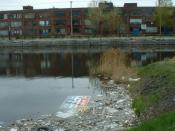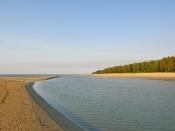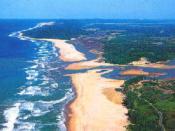The term ecosystem was created in 1935 by Sir Arthur George Tansley, an English ecologist, who said natural systems are constantly changing among their living and nonliving parts. Starting with the biosphere, there are several large categories of living communities called biomes. The biomes are made up of ecosystems. The living parts of an ecosystem, like the plants, animals, and bacteria found in soil, are known as a community. The physical surroundings, or biotic components, such as the minerals found in the soil, are known as the environment or habitat.
The major parts of an ecosystem are the producers (green plants), the consumers (herbivores and carnivores), the decomposers (fungi and bacteria), and the nonliving, or abiotic, component, consisting of dead organic matter and nutrients in the soil and water. Inputs into the ecosystem are solar energy, water, oxygen, carbon dioxide, nitrogen, and other elements and compounds. Outputs from the ecosystem include water, oxygen, carbon dioxide, nutrient losses, and the heat released in cellular respiration, or heat of respiration.
The major driving force is solar energy.
Biology is a relatively new science. Other sciences, like philosophy have roots dating back to such characters like Plato and Aristotle. However, up until man decided that the Earth was no longer flat, and instead a spherical ball, man couldn't have realized the effects that sun radiation has on the open ocean, heating the water creating a low pressure system, moving towards land, dropping precipitation, and returning to the desert as a high pressure system creating dry atmospheres.
The first biologists were naturalists, hunters, and men who appreciated their native lands. Many times consulting Indians as botinists to decipher the purposes plants and flowers may serve other than beauty, we've come along way, being able to understand the world around us in greater detail.


